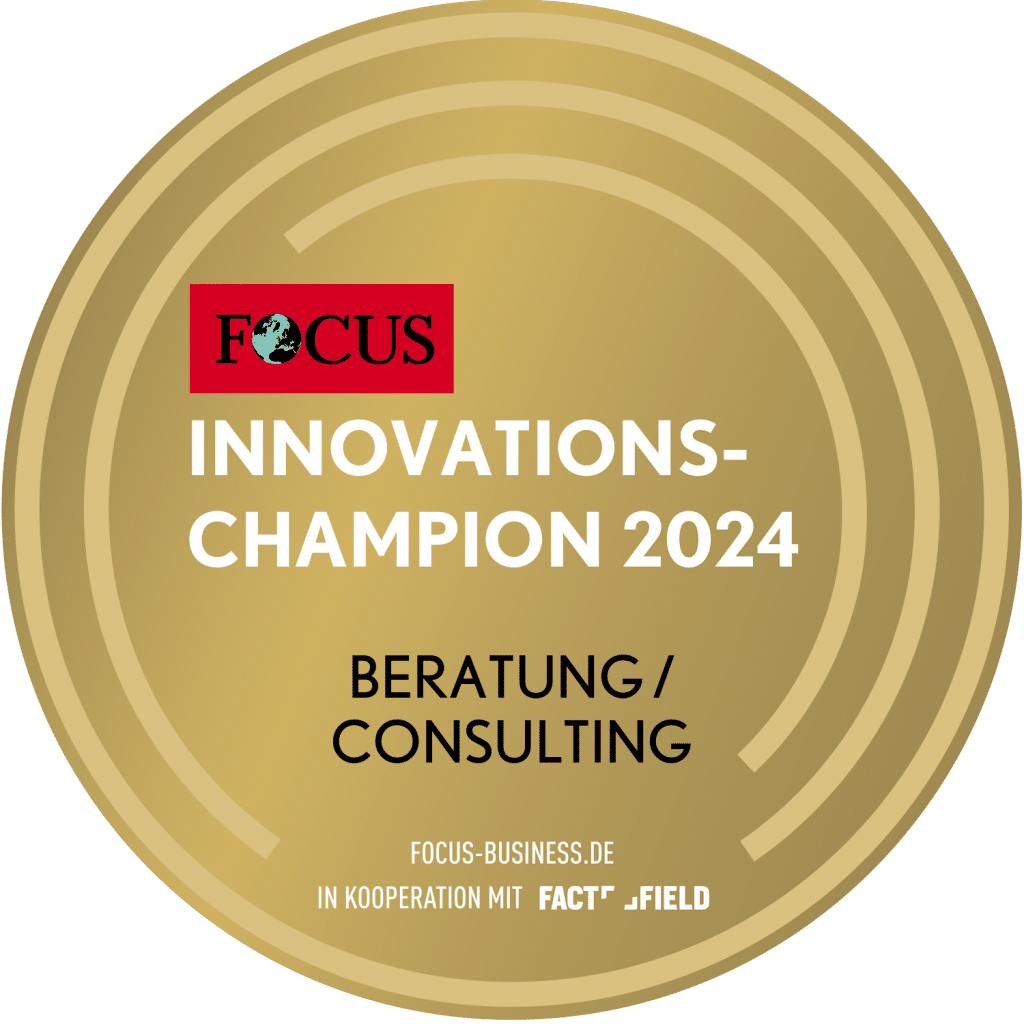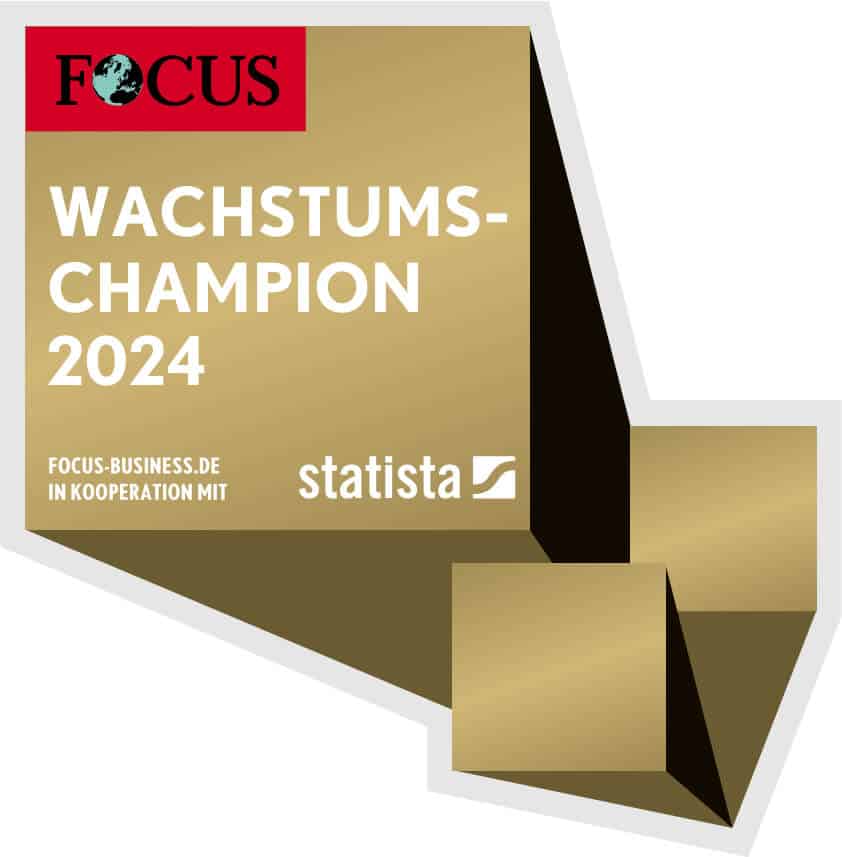Many companies label themselves as "agile" - but do not consistently implement the principle of agile working. Why agile working can only work in conjunction with a new management and corporate culture and what alternatives there are to SAFe® framework, describes Bernd Ettelbrück in an interview with TCI. He is the author of the article "Agility in Management" in the newly published anthology "Agility in companies".
Note from the TCI editorial team: Click here to go directly to part two of the interview - "What agile leadership can learn from military principles".
Agile working must be implemented holistically
Katja Heumader: An important sentence in your article is "Many companies use agile methods, but are not." Why is that a problem?
Bernd Ettelbrück: Agile islands in the sea of conventional working methods do not significantly speed up progress. Again and again you have to swim, dry off on the shore, get your bearings, walk and then change back into your swimming trunks for the next station. This image is not judgmental; agility is not fundamentally better than conventional methods. It is a question - as in other contexts - of the connection points and how they are operated. The connection points are called culture and management.
Agile means an iterative, transparent approach, especially in software development. Small steps, quick feedback, manageable planning cycles. This means less risk, faster success and realistic planning and describes modern management and teamwork. And now comes the challenge:
There is no project manager, the whole team is responsible. Who does the management hold responsible for failures? How does the project manager distinguish themselves in the event of success? And what about the error culture? In most companies I know, "making mistakes" means "failure" and certainly does not mean a career advancement. When failures occur, "culprits" are sought and usually found. They are then sanctioned as individuals so that the big picture can continue.
Product developers, designers and managers are interested in the technology and are enthusiastic about features. Customers are more interested in ease of use and making work easier. Early, negative feedback from users can mean that functionalities are not developed further or technological advances are not financed.
High-risk or very innovative projects can only be continued if the management deliberately conceals risks or uses political games to drive implementation forward, otherwise the project may be abandoned.
There are also different interests: company management wants to implement projects at low cost in a short space of time. The implementers, often external service providers, are interested in follow-up orders and long conception and realization phases. Companies have a variety of interests that are often in conflict. Agile action assumes that all team members in autonomous teams have the same interests in the success of the project. In reality, this is not always the case.
Most companies still work according to Taylorist principles: Efficiency and scaling are the aim. Plans, targets and budgets to achieve them determine the processes. Adherence to budgets and implementation must be monitored, and so must people. There are hierarchies and in many places thinking and acting are dissociated, i.e. there are people who think - these are the managers - and the employees who act.
However, agile working follows other principles: motivated employees focus their actions on the customer and organize themselves in self-responsible teams. The way of working is sustainable and avoids overload due to continuous speed.
On the beaches of the agile islands, these principles, some of which are in conflict, meet and sometimes cause high waves. In corporate reality, this means that around 70-80 % of agile transformations fail and the other 20-30 % bob along. Culture is reflected in action, less in thinking. For this reason, I think it is nonsense to create an "agile mindset", even if there are expensive seminars with such titles.
Management and corporate culture are crucial to success
KH: When will agile working methods such as SAFe® to their limits?
BE: Agile working with SAFe® can only work to the extent that management and the corporate culture allow it. Agile frameworks such as SAFe are used as methods that organize the new way of working. There are now around fifty (Expansion based on the work of Australian consultant and coach Craig Smith from 2015) various agile methods and frameworks for scaling, as shown in Figure 1. The principles of the agile manifesto are not established or only to the extent that they do not contradict the company principles. For an agile transformation to work and for agile work to take place, companies must change their principles, i.e. adapt their management and organization so that they are in line with the principles of the agile manifesto.
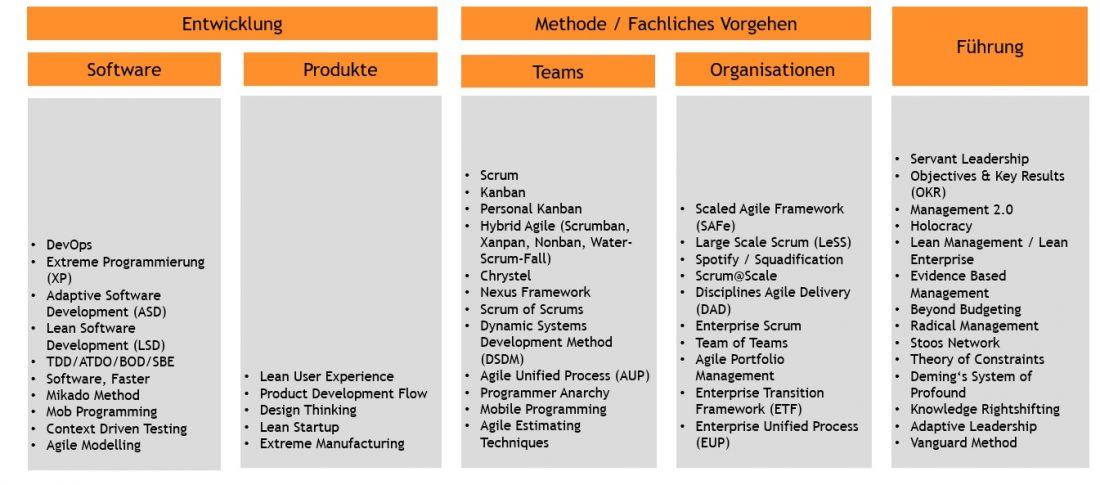
The limitations of SAFe therefore lie less in the method itself, but rather in how the method is limited by the corporate context. Another limit to the application of agile working methods is the market environment. Agility is not always right and in demand. In many areas, what matters is precision, perfect production within a specified framework in a defined process with clear guidelines and a management team that ensures compliance. Not all markets are complex or characterized by a high speed of innovation. Agile working would be too time-consuming here and would lead to delays and additional costs due to coordination. Costs would rise and productivity would remain stable at best.
KH: What role does the type of personnel and company management play in SAFe®?
BE: The company management and supporting HR management train teamwork with their employees and adapt agile working methods and agile working to the operational processes and objectives.
If you read management literature, agility answers all the questions of the VUCA world and suggests that complexity reduction and more self-organization at team level are needed, and the company will become faster, simpler, more cost-effective and therefore much more competitive. Unfortunately, that's not how it works.
A large retail company has been working very successfully with agile software development for years. Now the roll-out is to be further accelerated in all branches and incremental changes and improvements to the software are to be implemented quickly and made usable for customers through agile joint work in mixed teams. A good plan!
However, store employees are not developers, their error descriptions and descriptions are rarely clear and customers are not testers, they cannot and do not want to test, they want to buy. As a result, releases were hardly improved and many new developments were implemented. Service costs rose and customer satisfaction fell. Not a good result of agile management.
Today, leadership should empower employees, support self-organized teams and dare to be more independent, delegating decisions downwards. Agile management is a welcome tool for this. Agile means fast, flexible and is often arbitrary.
Challenges in companies are a global environment with new competitors and an at least partially unknown market. Many companies complain about a silo mentality that managers have created themselves, because departments were required to optimize themselves and deliver positive figures. Technology is changing rapidly, artificial intelligence and deep learning need to be introduced and used quickly, but there is a lack of experts and training concepts.
In order to achieve all of this, it is not uncommon for temporary parallel organizations to be created. Special roles and new teams are created to bypass bureaucracy and hierarchy and solve old problems. And so on.
What makes successful teams? The American management consultancy Vantage Leadership Consultants from Chicago has been dealing with this question for forty years and names five points:
- A clear goal has been defined for the team
- Shared responsibility for results
- Transparent communication
- Constructive conflict resolution
- Respect and mutual trust
In my opinion, it is the task of management to establish this and they should be supported by the HR department in planning and implementation.
KH: Why do companies decide to introduce the Scaled Agile Framework, or SAFe for short?®?
BE: Many agile methods such as Scrum or Kanban describe the methodical approach for individual teams. There is a lack of information on how entire organizations work in an agile manner or how several agile teams working on one project or several agile projects can be managed in parallel. Scaling approaches such as SAFe® provide a framework for companies that want to transform themselves in an agile way or predominantly use agile project management. SAFe® is successfully working the market, integrating new topics such as customer focus and is also suitable for hybrid approaches, i.e. a mixture of agile approaches, for example in software development, and classic approaches in product development.
Agile methods relate to processes and individual teams. These methods do not answer questions about the attitudes that support agile working or measures to ensure a high quality of results. SAFe® closes gaps and makes it easier for companies to adopt a systematic approach. In companies and their suppliers, teams with different methodological approaches, such as a Kanban board, often work together. This makes collaboration and coordination more difficult. Often the new procedures do not even reach the company management. SAFe® can help to better integrate management into agile working methods and to better coordinate different teams within the same company.
SAFe®: Structures too complicated?
KH: But you claim in your article that SAFe® is merely an "instrument of transition" that can help to scale agile working methods in larger companies - but advocate alternatives. For what reasons?
BE: SAFe® is one scaling approach among many. The most common "frameworks" are categorized in Figure 2 based on the criteria of scalability and complexity. I have to operationalize these two criteria, which can vary depending on the application and context. For example, the Scrum of Scrums, Nexus, disciplined agile delivery or large scale Scrum (LESS), to name just a few.
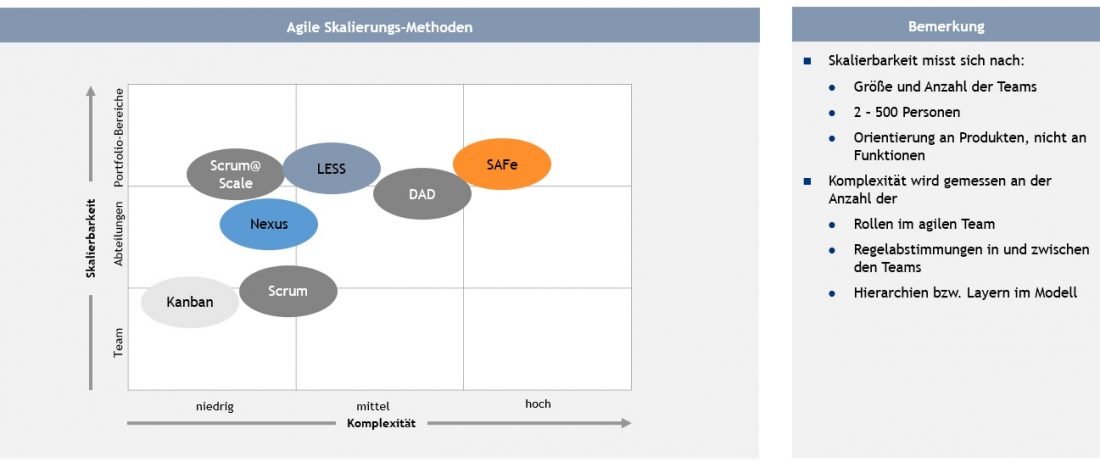
One argument in favor of SAFe® is that the framework helps to work on attitudes in companies, which can be particularly successful in large companies that have grown over a longer period of time. SAFe® also supports hybrid approaches, i.e. the use of agile processes in some areas while other functional areas still work traditionally. This can make technical sense and avoids excessive changes that could lead to resistance or discussions.
I find the discussion of an "agile mindset" to be theoretical and often vague. The SAFe® framework is an agile overlay structure to the existing organizational structure. A kind of management is set up alongside the management, which leads and makes decisions using the same outdated management practices. Both are definitely not agile.
SAFe® offers different expansion levels, depending on the size and complexity of the project. Depending on the expansion stages, there are up to four levels: one each for the team, the program, the portfolio and the large solution level, which is intended to control the value streams.
There are roles at these levels: the product manager, the system architect and the release train engineer. Then there is the business owner, who monitors the RoI, costs and benefits and, of course, the customer, whose requirements the work is geared towards. At the more complex levels, additional roles are added to cope with the increasing complexity. And all of this is installed alongside traditional management.
This contradicts the agile principle of flat hierarchies and, in my opinion, significantly increases complexity. Other scaling methods are leaner and more aligned with agile principles, for example the above-mentioned LESS.
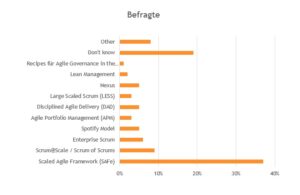
At the same time, SAFe® is a popular orientation framework. Over the years, SAFe® has established itself as the leading framework for scaling agile methods. 37% of respondents use SAFe® as shown in Figure 3 from the current 15th State of Art agile Report from 09.07.2021 shows. Larger companies in particular need a solid structure in a phase of transition in order to successfully manage the change from traditional and complex organizational structures to self-organized work with leaner processes.
KH: Mr. Ettelbrück, thank you very much for these comprehensive insights into agile working methods, SAFe® and the alternatives.
The interview with Bernd Ettelbrück was conducted by Dr. Katja Heumader for the TCI editorial team.
Read also Part two of the interview - "What agile leadership can learn from military principles".
"Agility in companies": theoretically sound and practical

The focus of "Agility in Companies" is on the practical application of the concepts. In addition to an introduction to the theoretical foundations, the contributors to the anthology cover various areas: Corporate and personnel management, organizational management, evaluation and controlling, decision-making behavior, roles in projects and the management of business processes.
"Agility in Companies" is aimed at internal and external practitioners for whom transformation management is at the center of their tasks. Coaches, business managers, managing directors and other decision-makers will benefit from the comprehensive perspectives in this anthology, as will academics and lecturers specializing in organization, agile management, project management, business management, change management, product management, development, process management and strategic management.
Note from the editors:
Buy the entire book or individual chapters directly here as eBook for Euro 46.99 (complete edition) or Euro 26.70 (individual chapters)!
Or order the anthology as a high-quality Hardcover for Euro 59,99!
Source cover image: © Stock Rocket / stock.adobe.com

